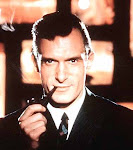Another of my interests is Kow's non-Ma.K work. As well as being a respected painter and model builder Yokyama-san has also contributed to the design of many computer games and even a few films. Among these lesser known projects were the Mecha that Kow created for the Playstation game 'Carnage Heart' and it's sequels. Some of these mechs could almost be seen as progressions of the designs he did for 'Robot Battle 7'. The blurb for the game reads ...
"In the near future, a giant corporation will have taken over one of Jupiter's moons, with the intention of mining minerals from the moon for profit. However, the World Government wants to use the minerals to benefit humanity. A war always breaks out when greed and altruism collide, and this is where you step in. You aren't a soldier, you're an engineer and computer programmer, and you are going to run the war. You'll have to Construct Overkill Engines (OKEs) which are unmanned mechs from available parts or invest money in research and design. Once the basic design for your OKEs is complete, program their AI. Every aspect of combat must be accounted for: when to dodge, how to attack, what evasive maneuvers to take. Then let the OKEs act according to their programs. In the war of CARNAGE HEART, brains, not brawn, will win the day."
The following article was written by Jeffrey Fleming for 'Games Collector's Melancholy' ...
"Carnage Heart was designed by Masaki Iizuka with mecha designs by artist and kit modeler Kow Yokoyama. It was firmly rooted in the ‘realistic robots’ tradition of Japanese sci-fi and featured mechs fighting corporate battles across the moons of Jupiter. Packaged with two dense manuals and a separate tutorial disc, Carnage Heart was not a game that one could just pick up and start playing.You begin by designing your combat units called Over Kill Engines, choosing their body type, engine size, armaments, and other accessories. This part is fairly generic and familiar to anyone who has spent time with Armored Core. Once a design is settled on, you also have to put it into mass production which involves managing factory assembly lines while making sure income levels stay in the black. There are also opportunities to do business with various trans-national corporations, buying technology, funding research, and engaging in a bit of industrial espionage.
So far, all of this sounds interesting but not radically different from many other strategy/economic sim games. What really makes Carnage Heart distinctive is that you have no direct control over your Over Kill Engines when they enter combat. Instead, during the design phase you must preprogram the combat behavior of your Over Kill Engine. This is done by laying out modules of set commands on a grid and linking them together in a flow chart of “IF... THEN...” statements. A simple example would be IF enemy detected within 100 meters THEN fire main weapon.
Of course, success in the game requires much more subtle strategies. There is a wide variety of modules to work with, including the ability for OKEs to communicate with each other, enabling complex, coordinated attacks. Once you become familiar with Carnage Heart’s programming language much of the pleasure of the game comes from working out clever OKE programs. It is a remarkable and creative experience to able to “play” the game while sitting at a table with pencil and paper, writing new programs to try out.
First published for Japan in 1995, Carnage Heart was brought to the U.S. in 1997 by Sony Computer Entertainment in an ambitious attempt to push the boundaries of console video games. Unfortunately, the game’s indirect and rigorously intellectual style of play was a hard sell to an audience more accustomed to fast action and glossy visuals. Spare, complex, and difficult, Carnage Heart was like a cup of hot, black coffee that few had the taste for.
Although Carnage Heart quickly vanished without a trace in America, the game enjoyed an extended life in Japan. In 1997 Artdink brought out a revised version of Carnage Heart called Carnage Heart EZ (Easy Zapping). A full sequel followed in 1998 titled Zeus Carnage Heart Second for both Playstation and Windows. In 1999, Artdink brought out Zeus II Carnage Heart and sponsored national Carnage Heart competitions in Japan to promote the game. The series lay dormant for several years until Carnage Heart Portable for the Sony PSP was recently published in Japan by Genki in the fall of 2006.
Resources for English speaking Carnage Heart enthusiasts are scarce. In the spring of ‘97 Sony began publishing its Playstation Underground CD magazine. Included in Volume 1, Issue 1 was a Carnage Heart demo along with a set of OKE designs from Artdink that could be downloaded on to a memory card. Issues of Playstation Underground show up from time to time for auction but generally do not sell for much.
Sometimes the most interesting games in a collection are not necessarily the most expensive ones. Carnage Heart can be found with relative ease for around $20, making it a painless acquisition for those wanting to add some depth to their collection."
Gameplay videos for Carnage Heart and Zeus 2.







No comments:
Post a Comment